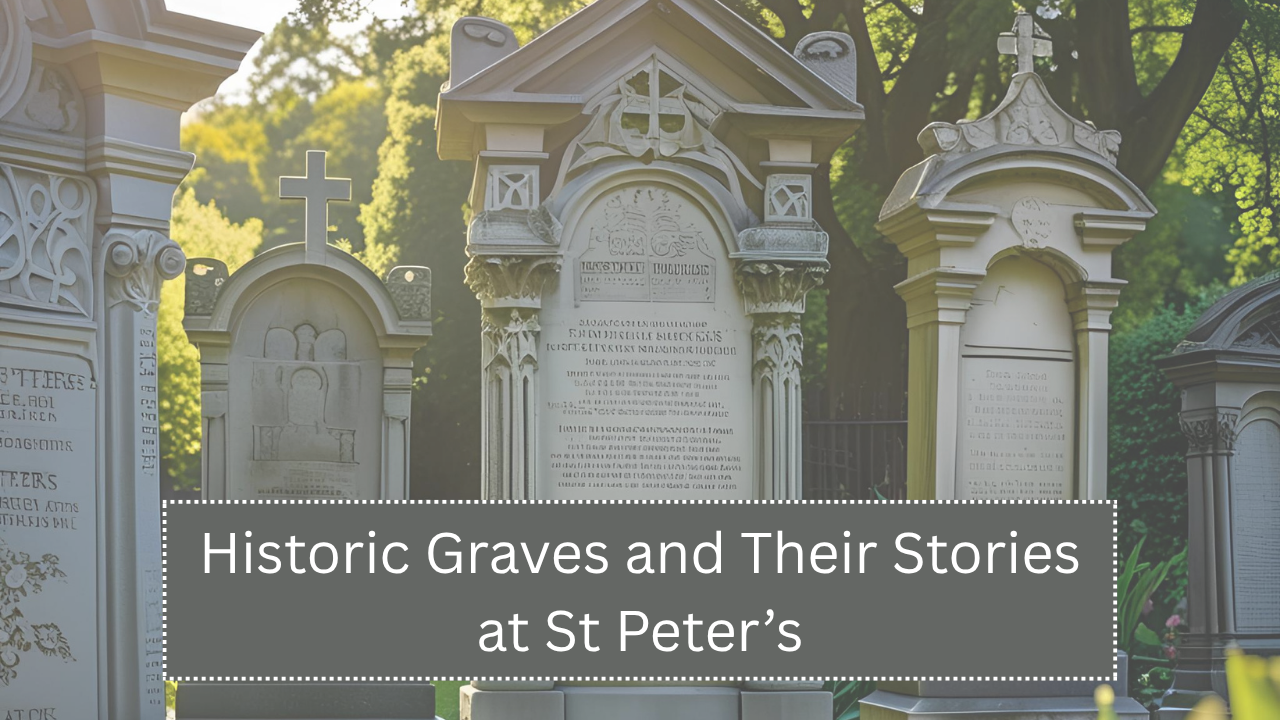St Peter’s Churchyard holds a rich and mysterious charm rooted in centuries of history. Located in a quiet corner of the village or town it resides in, this churchyard has long served as the final resting place for a fascinating mix of historical figures, local heroes, and ordinary townsfolk whose stories still echo today. Every gravestone, worn down by time and weather, carries more than just a name—it carries a legacy.
Famous Individuals Buried at St Peter’s Churchyard
A churchyard is often a mirror of local history, and St Peter’s is no exception. Many prominent personalities from the area lie beneath its soil, representing centuries of cultural, political, and social evolution.
- Sir Thomas Whitmore
A 17th-century landowner and Member of Parliament, Sir Thomas was a powerful figure during the English Civil War.- Supported the Royalist cause.
- Imprisoned in the Tower of London by Parliamentary forces.
- His gravestone is one of the oldest and most ornate in the churchyard.
- Reverend John Albright
A renowned theologian and preacher in the early 1800s.- Known for his writings on spiritual reform.
- Served as vicar for over 40 years.
- Gravestone inscription includes a verse from the Psalms.
- Elizabeth Crane
A 19th-century nurse who died during a cholera outbreak.- Tended to the sick during an epidemic.
- Regarded as a local hero.
- Buried with a small marble headstone funded by donations.
Unusual Epitaphs and Gravestone Inscriptions
Some gravestones at St Peter’s Churchyard include poetic, haunting, or even humorous epitaphs that provide glimpses into the lives and personalities of the deceased.
- James Holloway (d. 1799)
“Here lies a man both firm and brave, who dug with spade and found his grave.”- Local legend claims he dug graves by profession.
- Died after collapsing while digging.
- Mary Anne Ford (d. 1851)
“She sang to the birds and prayed for the lost, her kindness a light none could exhaust.”- Remembered for caring for orphans and birds.
- Her grave is often decorated with feathers and flowers left by visitors.
- Thomas and Eliza Brent (d. 1873 & 1875)
Shared epitaph reads: “In life united, in death entwined. Love has no grave it cannot find.”- Married couple who died within two years of each other.
- Tomb shaped like two clasped hands.
Notable Graves at St Peter’s Churchyard
| Name | Lifespan | Contribution | Gravestone Feature |
|---|---|---|---|
| Sir Thomas Whitmore | 1599–1653 | Royalist MP during English Civil War | Ornate carving and royal crest |
| Rev. John Albright | 1768–1834 | Clergyman and theologian | Psalm engraving and iron fence |
| Elizabeth Crane | 1811–1849 | Nurse during cholera outbreak | Marble stone with laurel wreath |
| James Holloway | 1742–1799 | Gravedigger | Witty rhyming epitaph |
| Mary Anne Ford | 1780–1851 | Philanthropist | Decorated frequently by locals |
| Thomas & Eliza Brent | 1800s | Couple remembered for love and unity | Clasped hands tomb sculpture |
Symbolism Found on Gravestones
Gravestone art can communicate beliefs, status, or personal qualities of the deceased.
- Angels with Trumpets
- Symbol of resurrection and the final judgment.
- Found on several Victorian-era graves.
- Weeping Willow Trees
- Representation of mourning and eternal sorrow.
- Common on early 19th-century headstones.
- Clasped Hands
- Denotes unity in marriage or friendship.
- Appears on joint graves like Thomas and Eliza Brent.
- Skull and Crossbones
- Not a pirate symbol, but an old emblem of mortality.
- Seen on 17th-century stones.
Community Stories and Oral Histories
Local legends often surround historical burial sites, enriching the cultural fabric of places like St Peter’s Churchyard.
- The Ghost of Reverend Albright
- Said to appear on foggy nights near the church tower.
- Locals claim to hear faint organ music.
- The Hidden Grave of a Revolutionary
- Oral history tells of a man buried in secret for rebelling against the crown.
- No gravestone, but some believe it lies under an old oak tree.
- The Wedding Ring Tree
- A yew tree beside a 19th-century grave has a silver ring embedded in its bark.
- Believed to have grown from a widow’s offering after burying her fiancé.
Common Gravestone Symbols and Their Meanings
| Symbol | Meaning | Time Period Commonly Used |
|---|---|---|
| Angel with trumpet | Resurrection and divine calling | 1800s–1900s |
| Weeping willow | Grief, sorrow, and mourning | 1700s–1800s |
| Clasped hands | Unity, farewell, or marital bond | 1800s onward |
| Skull and bones | Mortality and reminder of death | 1600s–1700s |
| Dove | Peace, innocence, especially for children | Late 1800s |
Preservation and Historical Importance
Many headstones at St Peter’s Churchyard are weathered, broken, or partially sunken. Local efforts have been initiated to preserve these remnants of history.
- Conservation Projects
- Community volunteers clean and document graves.
- QR codes added to notable gravestones for educational tours.
- Digitization
- Parish has started archiving burial records online.
- Includes photographs and transcriptions of inscriptions.
- Educational Tours
- School groups and history enthusiasts visit regularly.
- Guided tours highlight both well-known and hidden stories.
Preservation Efforts at St Peter’s Churchyard
| Initiative | Details | Year Started |
|---|---|---|
| Grave Documentation | Cataloguing inscriptions and photographing stones | 2018 |
| QR Code Integration | Scannable markers for digital storytelling | 2020 |
| Heritage Walks | Monthly guided tours sharing churchyard history | 2021 |
| Stone Restoration Fund | Community donations used to repair damaged gravestones | 2022 |
Final Thoughts
St Peter’s Churchyard stands as more than a burial ground—it is a living museum of memory, sacrifice, love, and legend. Its historic graves connect today’s world with lives long passed, offering insights into local culture, values, and history. Continued efforts in preservation ensure that future generations can appreciate these stories carved in stone and passed down through time.

